The imposition of kinesiology tape on the femoris area
Pain in the hip

Indications: Pain in the hip, coxarthrosis, recovery period after joint prosthetic replacement
1. This method requires four equal I-tapes. Tape length is 15-20 cm.
2. Ask the patient to lay on the lounge on his/her side, so that a joint of concern is on top. Ask the patient for flexion of his/her leg in the knee.
3. Using ligament method, apply the first tape. The centre of the first tape is applied in the projection of the greater trochanter or over the zone of maximal tenderness upon palpation.
4. Apply the second tape horizontally, so that the combination forms criss-cross.
5. Using ligament method, apply the third and fourth tapes in diagonal direction.
Perthes disease
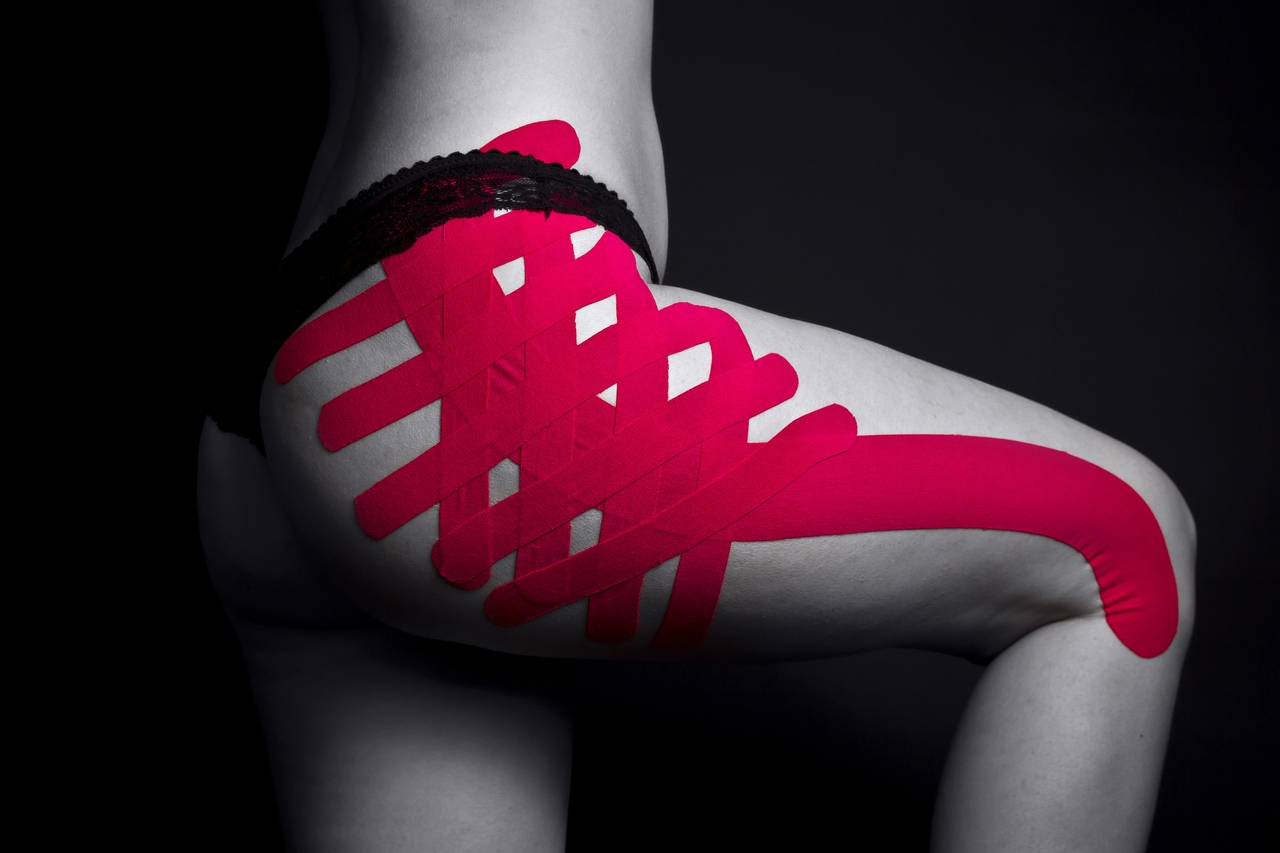
Indications: Perthes disease, coxarthrosis, pain in the hip, rehabilitation after joint prosthetic replacement
1. This method requires one piece of tape of 30-40 cm long. The length of the piece directly depends on the patient’s anatomic features. Also we need 8-10 pieces of the tape 10-12 cm long and 2.5 cm wide.
2. Ask the patient to lay on his/her side and bend his/her knee and hip.
3. Apply the first tape from the knee joint along the lateral thigh surface towards pelvic bone with a 15 % tension.
4. Apply 8-10 pieces of the tape crosswise/as a mesh in the region of the hip joint using ligament method over the first tape.
Piriform muscle
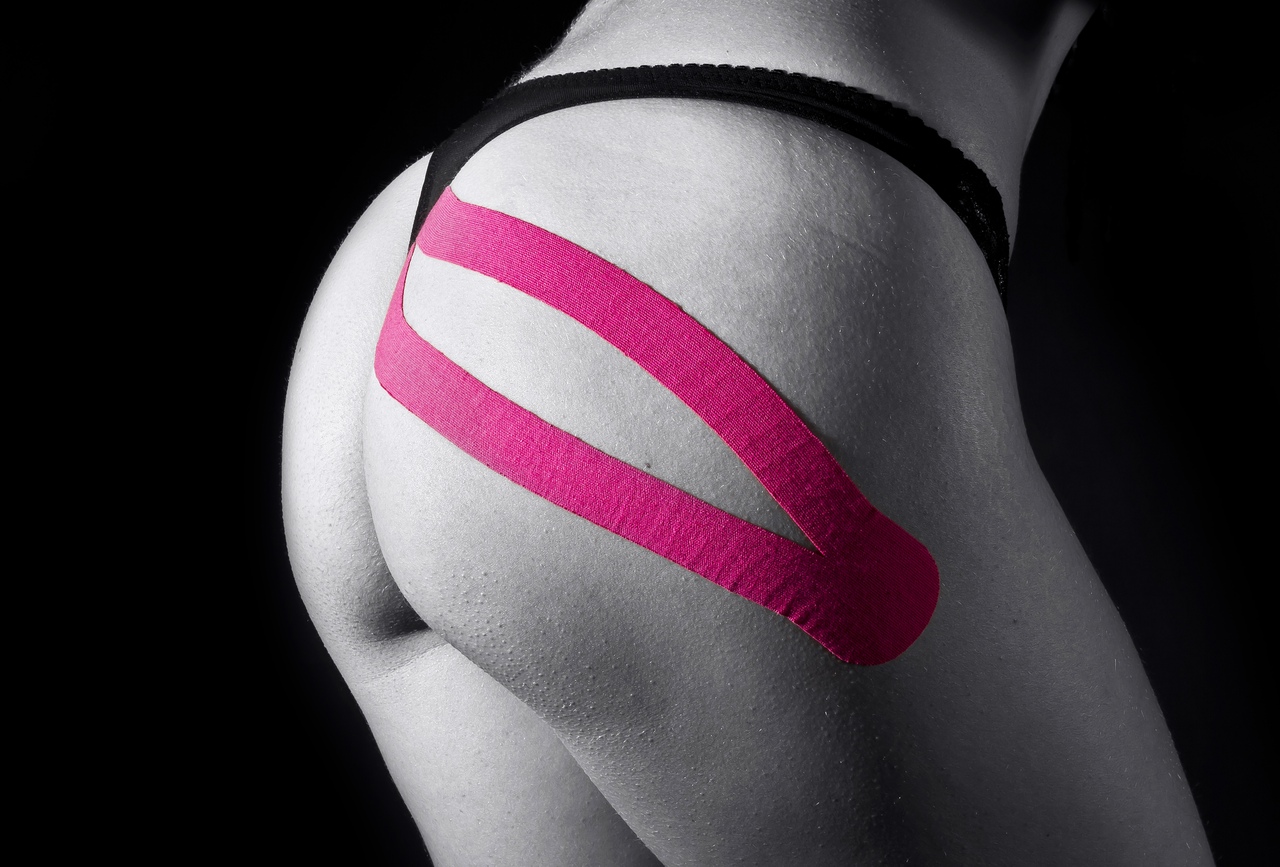
Indications: Piriform muscle syndrome, ischias, hypertonic muscle
1. This method requires one Y-tape 15-18 cm long.
2. Ask the patient for bending in the hip by 90 degrees.
3. Apply the base of the tape without tension on the femoral trochanter.
4. Apply both strips of the tape with a 15 % tension on a piriform muscle towards the place of its insertion in the sacrum.
Injury of hamstring muscles
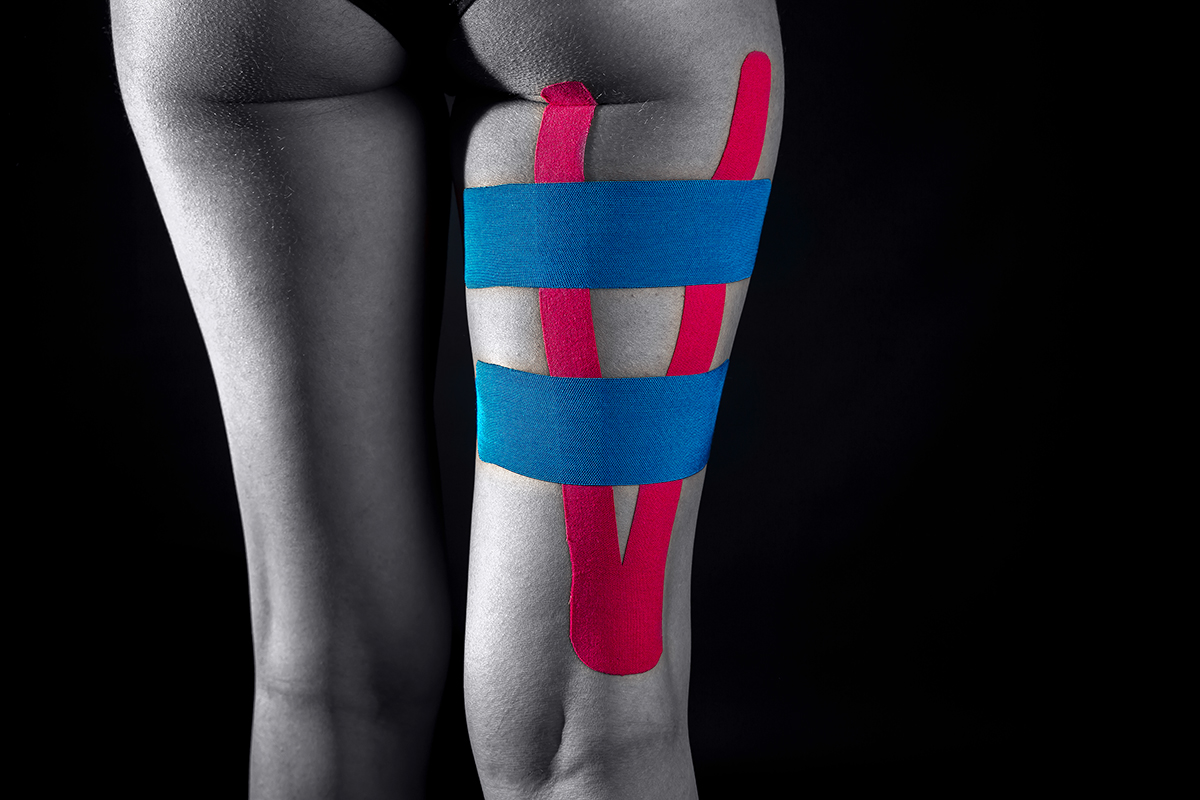
Indications: muscular damage
1. This method requires two I-tapes 13–15 cm long and one Y-tape 20–25 cm long.
2. Ask the patient for bending of his/her body forward from standing position.
3. Apply Y-tape with a 15 % tension from distal end of the muscle towards proximal one.
4. Apply I-tape using ligament method proximally and distally of damaged area.
Bursitis of femoral trochanter
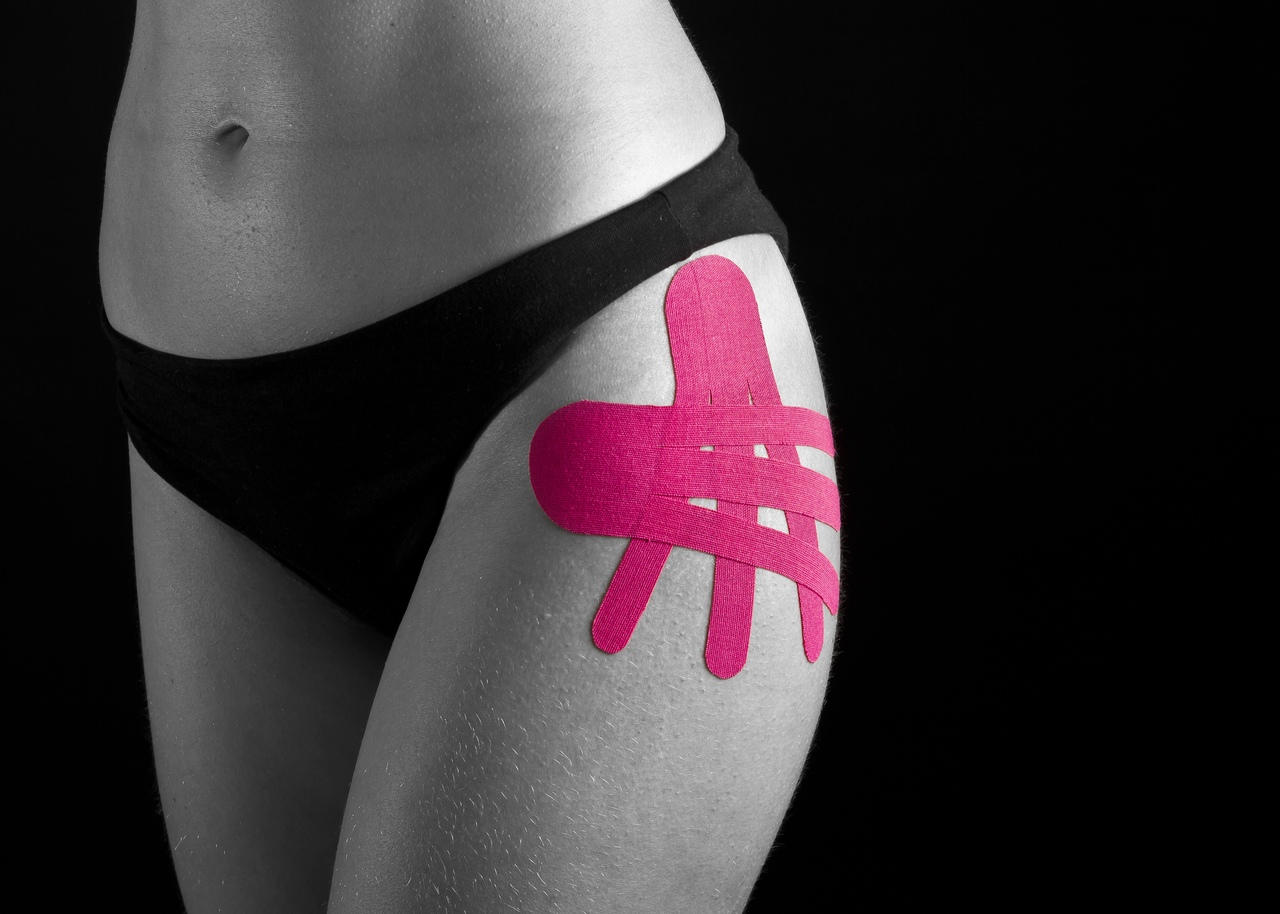
Indications: Bursitis of femoral trochanter, swelling/haematoma of the hip
1. This method requires two lymph-tapes approximately 15 cm long.
2. Apply the base of the first tape proximally to the hip, then two strips of the tape are applied with a 15 % tension in the projection of greater trochanter.
3. Apply the base of the second tape along the antero-external surface of the thigh, so that the tape strips are perpendicular to the first tape. Apply the strips with a 15 % tension.
Sartorius muscle
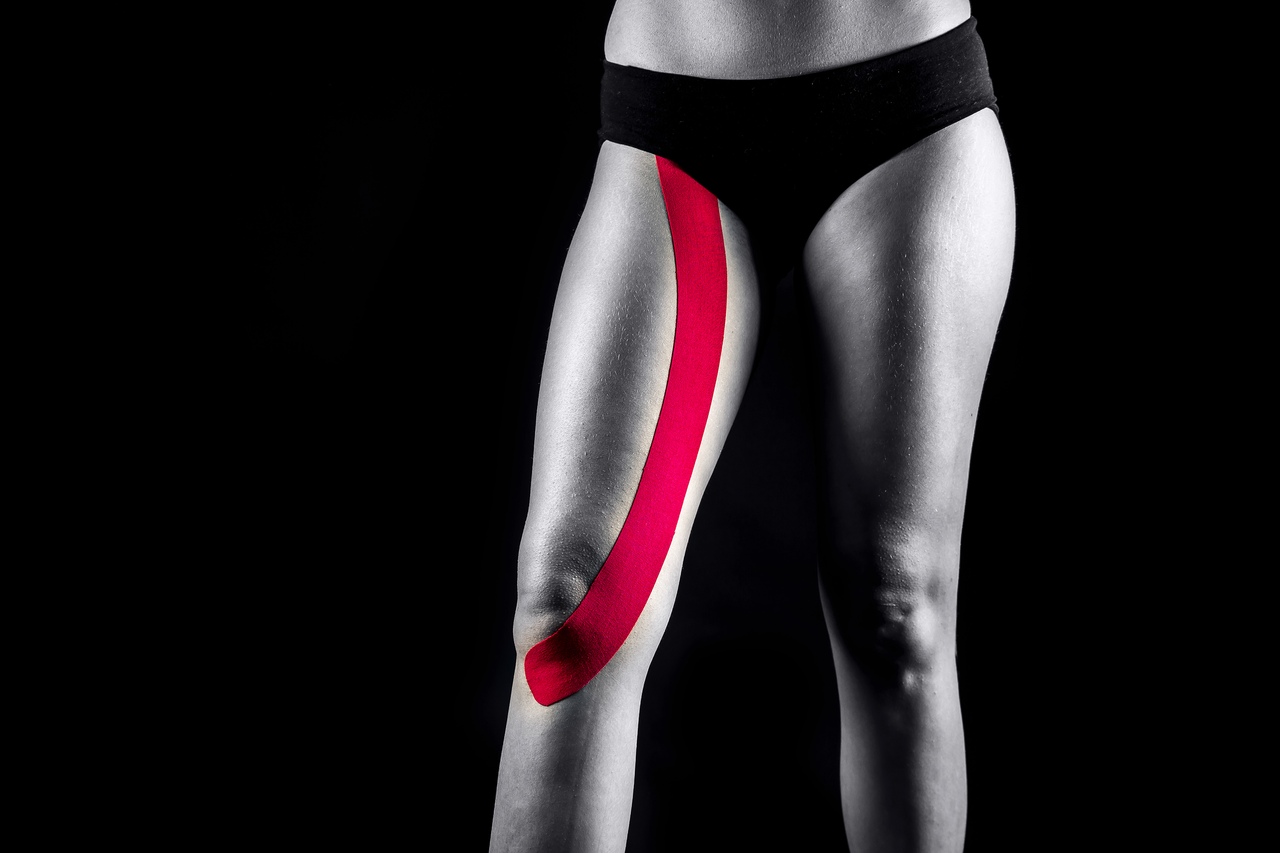
Indications: Hypertonic muscle, trigger points
1. This method requires one I-tape approximately 40 cm long.
2. Apply the base of the tape on the site of muscle insertion — tibial tuberosity.
3. Ask the patient for bending of his/her knee and extending in the hip.
4. Then apply the tape with a 15 % tension towards the site of muscle insertion — superior anterior iliac bone.
5. Apply a tape anchor without tension.
Hamstring (variant 2)

Indications: Hypertonic posterior femoral muscles, trigger points
1. This method requires two pieces of the tape approximately 30 cm long. The length of the pieces directly depends on the patient’s anatomic features.
2. Apply the base of the first tape on the lateral part of femoral condyle, and the second one — on the fibula head.
3. Ask the patient to extend his/her knee and flex his/her thigh in hip.
4. Apply the tapes with a 15 % tension towards buttock, corresponding to the topography of semitendinous and femoral biceps muscle.
Hip bursitis
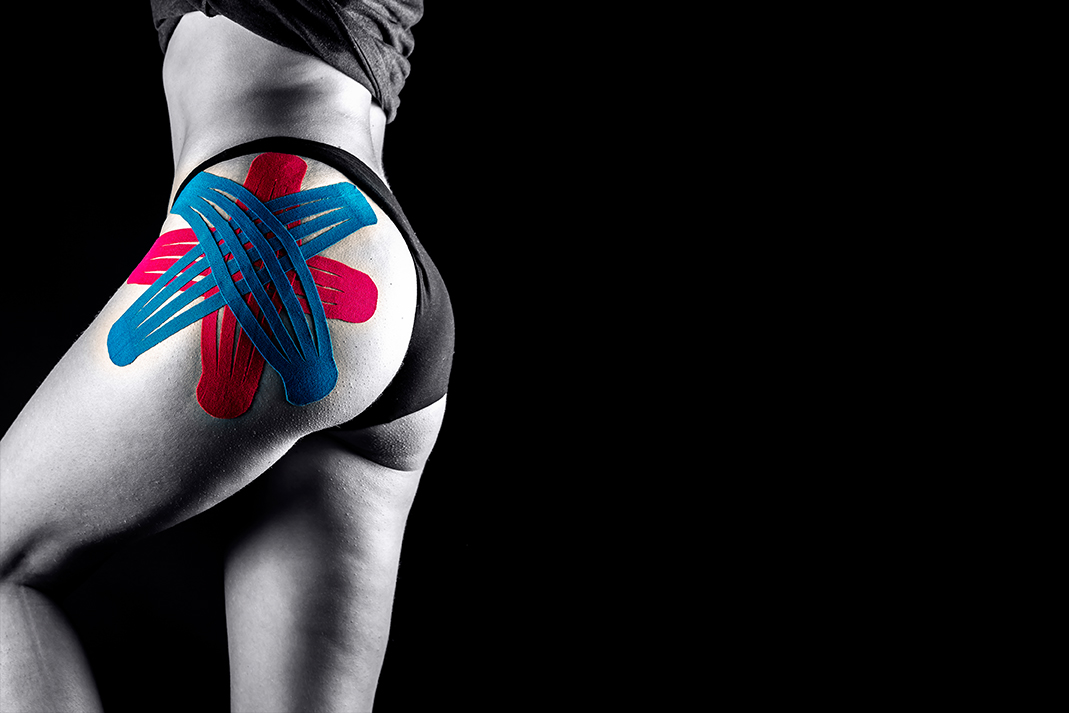
Indications: Hip bursitis, pain in the joint
1. In this case, we need 3 to 4 pieces of the tape 20 cm long.
2. After rounding of the ends, double up the tape and cut it by strips. The ends (about 4 cm on each side) are left integer.
3. Perform bending in the hip and apply the first two tapes in the projection of the joint along the lateral thigh surface criss-cross.
4. Apply the third and fourth tapes also criss-cross and in diagonal direction in respect of the first and second ones.
Tensor fasciae latae muscle
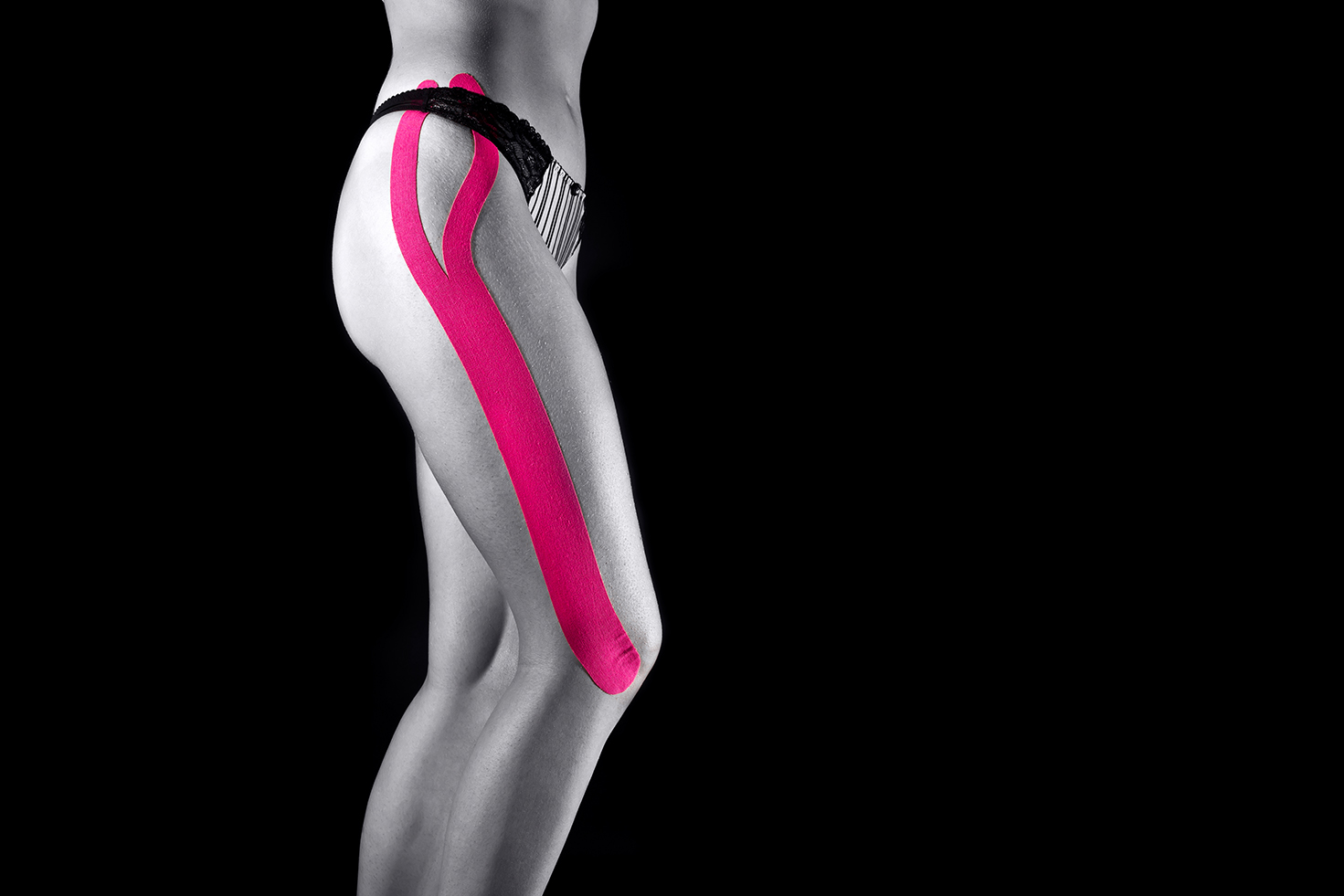
Indications: Trigger points, pain in the region of the knee
1. This method requires Y-tape approximately 50 cm long.
2. Ask the patient for flexion of his/her leg in the knee. Apply the base of the tape on iliotibial tract without tension.
3. Then ask the patient to extend his/her knee and continue application of kinesiology tape on tensor fasciae latae muscle with a 15 % tension.
Quadriceps muscle of thigh
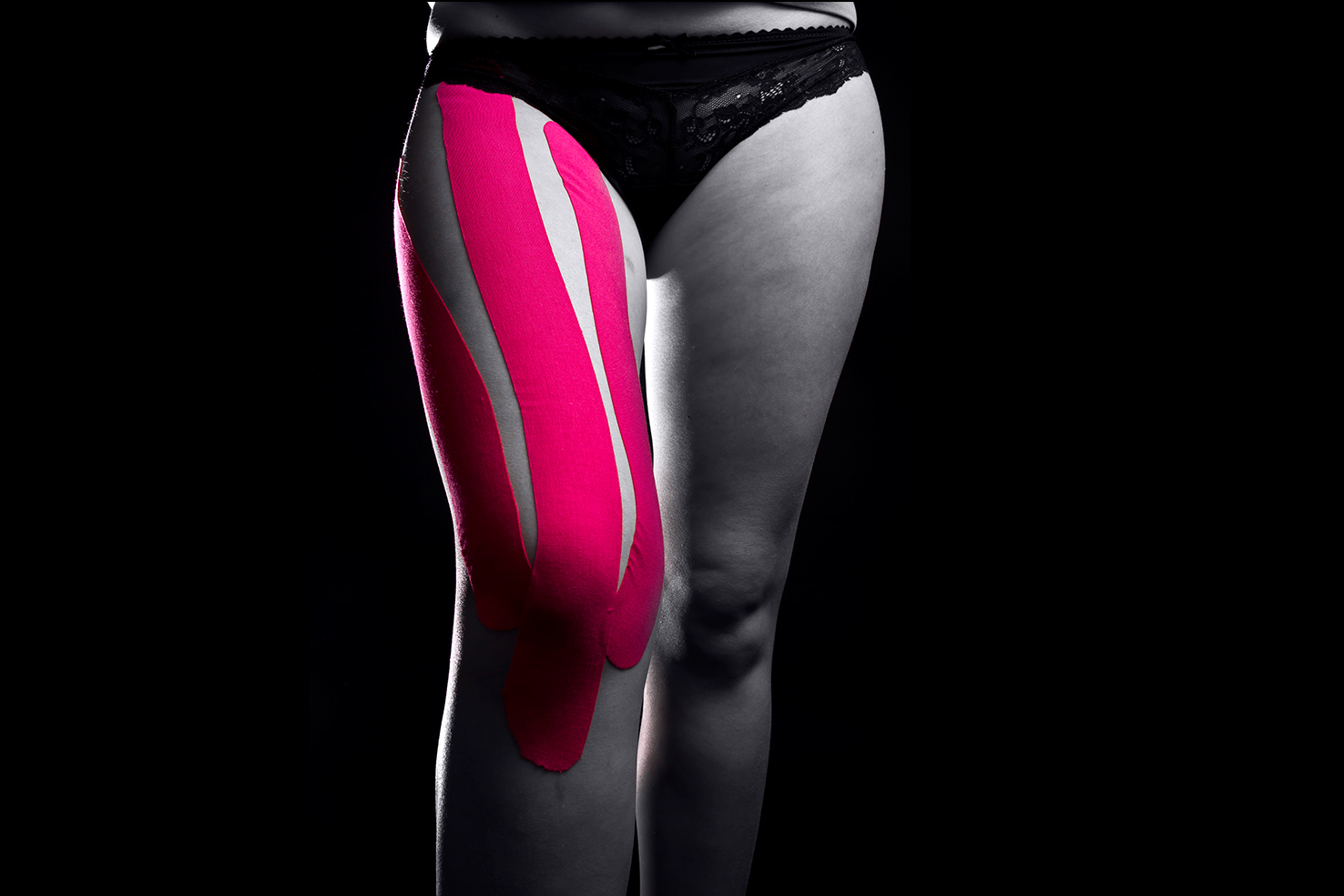
Indications: Trigger points, hypertonic quadriceps muscle of thigh
1. Measure and cut three tapes different in length. In this case, the length of the first one is about 20 cm, the second one — 23-24 cm, and the third one — 25-27 cm. The length of the tapes depends on patient’s anatomic features.
2. The patient extends his/her thigh and bend his/her arm in the knee in standing position.
3. Apply the first tape along the external side of the thigh. Apply the base of the tape without tension on tibial tuberosity and then, with a 15 % tension, apply along the lateral vastus muscle.
4. Then apply the longest tape on the rectus muscle of the thigh. Apply the base of the tape without tension in the region of the upper pole of patella, and then, with a 15 % tension, apply it along the muscle.
5. Attach the tape of 23-24 cm long, of moderate length, on the medial vastus muscle. Apply the base of the tape without tension in the region medially to the upper pole of patella, and then, with a 15 % tension, apply it along the muscle.
Hamstring
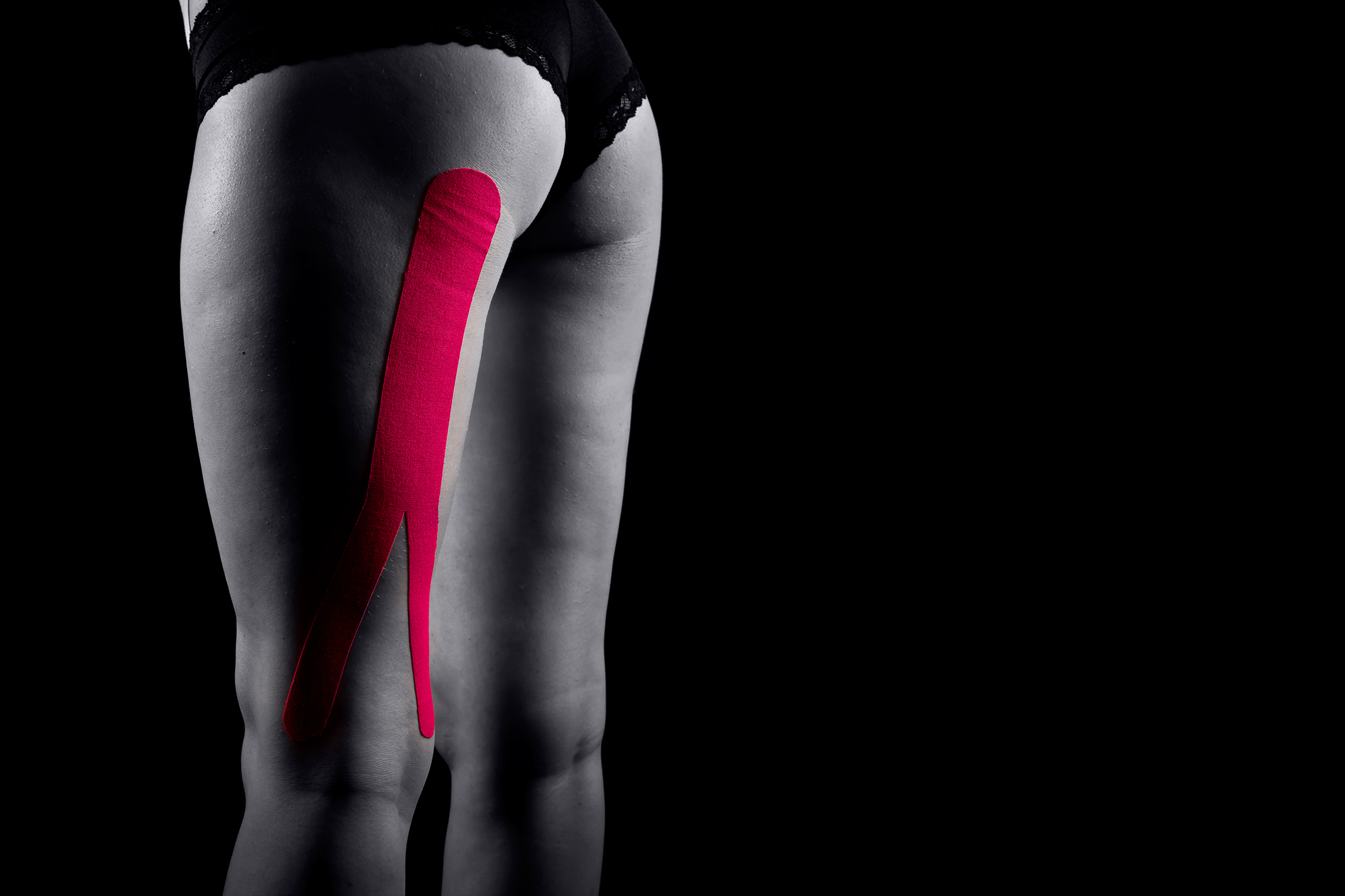
Indications: Hypertonic posterior femoral muscles, trigger points
1. This method requires one piece of the tape approximately 30 cm long. The length of the piece directly depends on the patient’s anatomic features. Divide one of sides of the tape into two equal pieces, forming Y-shape.
2. Apply the base of the tape on the lateral part of femoral condyle and on the fibula head.
3. Ask the patient to extend his/her knee and flex his/her thighs in hip.
4. Apply the kinesiology tape with a 15 % tension towards buttock, corresponding to the topography of femoral biceps muscle.
Gluteus maximus muscle
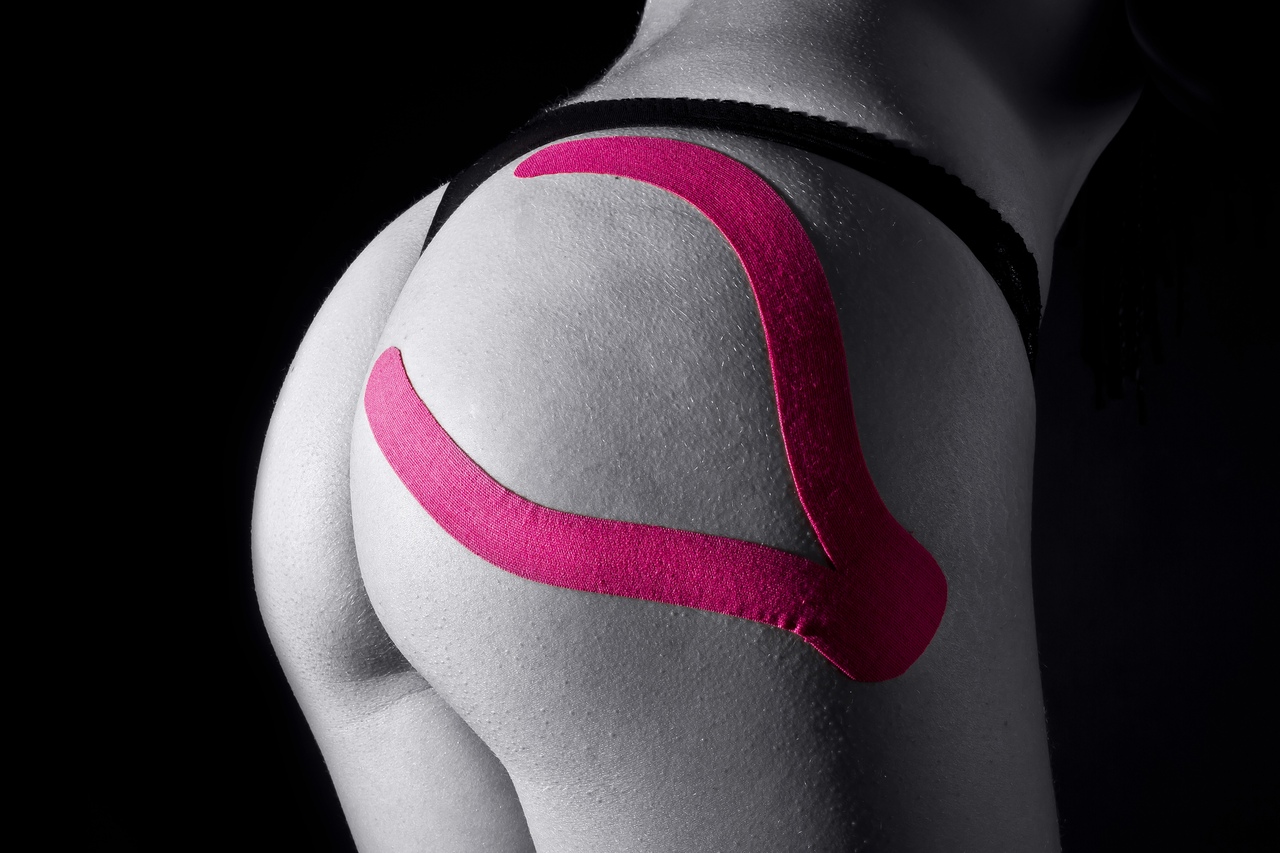
Indications: Hypertonic muscle, trigger points
1. This method requires one Y-tape of 20–25 cm long.
2. Ask the patient for bending in the hip by 90 degrees.
3. Apply the base of the tape without tension on the gluteal crest.
4. Apply both strips of the tape with a 15 % tension on gluteus maximus muscle towards sacroiliac joint and posterior part of iliac crest.
March 2020
April 2020
May 2020
 Shopping cart (0)
Shopping cart (0)
